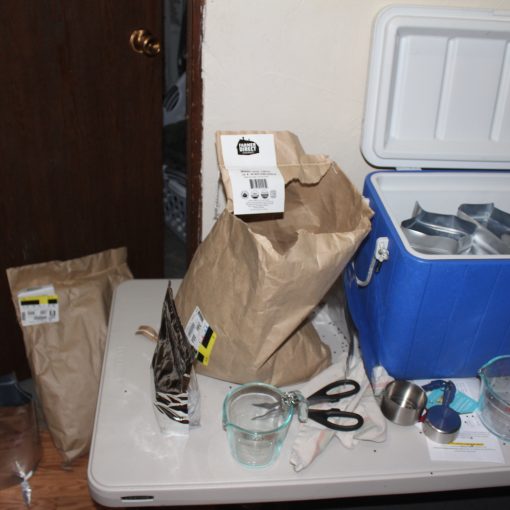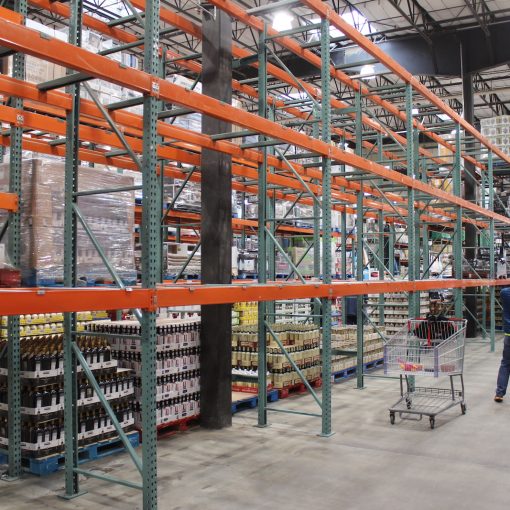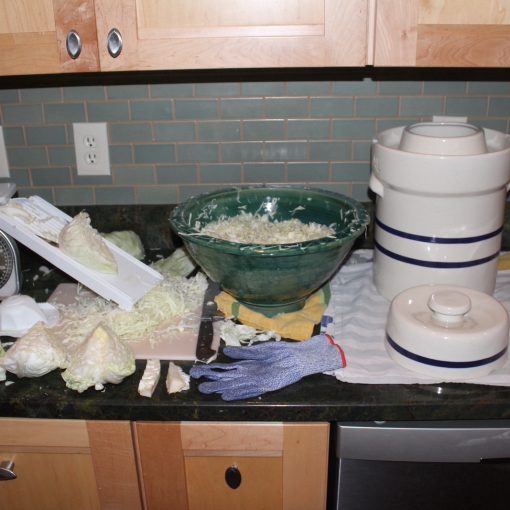Pressure Canning on a Camp Stove

If you’ve got a freezer full of food, and the power goes out for a longer time than you’ve got fuel for the generator, a camp stove is one way to save your food. Even if the power’s on, you’re not supposed to pressure can on glass top kitchen stoves. I learned this after the wife bought a glass top stove and I read the manual. Well dang. The reason being that pressure canners are massive. That mass absorbs so much heat they can crack the glass. I’m not crazy about glass top stoves for this reason but we all must compromise in this world. After thinking about it awhile, I decided to figure out how to can on the back deck. Turns out it was a satisfying transition.
Canning outdoors is a community imperative for families in bush Alaska. When the fish are running, elders mind the kids and the canner while others in the family keep fishing. They come home from a few days on the river with a lot of the winter canning already done. Other reasons to can outside is to avoid steam or fish smell in the house. Personally, I love the smell of canning fish.
Out o the deck. Once you’ve got the canner loaded and set on the burner it’s the same drill as canning inside. If anything, it’s more satisfying. There’s a lot more to see outside. If the bugs are out, you can plug in a box fan to keep them off. Pour yourself a glass of wine, watch birds in the trees…it’s great.
Stove
A lot of people using outdoor canners around here use one-burner crab cookers. They work. I decided on the three burner so it can go out to pot lucks at the beach and that sort of thing. I chose the Camp Chef Tahoe (as always, I don’t take any kick backs/freebies/money from sellers) for the following reasons:
It’s sturdy enough to support a loaded pressure cooker.
Pressure cooker is at waist level instead of ground level.
It has a wind guard that helps keep the flame from blowing out.
If one of the burners craps out there are two others.
Positive reviews from canners.
Relatively inexpensive.
Parts are available in town.
You can take the legs off and fold it up for storage.
Somebody might want to use it for a pot luck, wedding reception, etc.
Don’t know if the company endorses canning on these stoves, but a lot of people do it.


The big thing to know about canning with camp stoves or crab cookers is don’t crank the heat up full blast. Some people on the internet say do that. Don’t listen to them. It’s way hotter than you need and can damage your canner.
Your cooker may want different adjustments, this is what I do.
1) Bring the heat up slowly, starting between low and medium. 2) When steam starts venting from the petcock, let it vent 10 minutes. 3) put the weight on (10 pounds at sea level), let it heat until it starts to jiggle. 4) start your timer, for salmon it’ll be 100 minutes. 5) Turn the heat down slowly until you find that sweet spot where the weight jiggles about 6 times per minute. That’s what you want. It may take ten minutes or so of micro adjustments getting the heat to where you’re comfortable letting it ride on its own. At that point you can work nearby, play the guitar, or whatnot but you should stay close enough that you can hear the cooker vent to make sure all is well. 6) when cooking time is up, turn off heat. Don’t take the weight off. Just let it cool down on its own until there’s no pressure in the cooker. Then you can take the weight off, open the lid, and remove the jars. Pick them out straight up using the jar remover. They’ll keep boiling for a few minutes after they come out of the cooker. The lids start to pop as they seal. Pat yourself on the back. You’ve got 14 pints of high quality protein for next winter. Well done!

Propane Tanks
Tanks are inexpensive. Get two so you don’t run out if you’re canning a few batches and don’t want to run into town for gas. For a single batch you won’t if you pay attention to the weight of the tank before you start.
New tanks: Come slightly pressurized with an inert gas so moisture doesn’t get in the tank. That has to be bled off. When you get it filled the first time the attendant at the station will bleed it for you.
Tank Gages: A lot of the 5 gallon tanks come with gages. Consensus about gages is they’re useless. Check weight of your new tank on a bathroom scale when before you get it filled. Write that number down. Then check it when it’s full. Write that number down. Check the weight after canning a batch so you’ve got an idea how much gas you’ll use.





